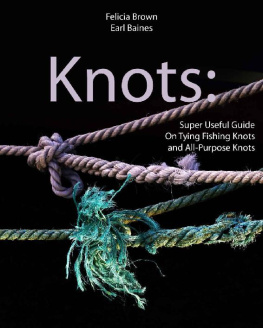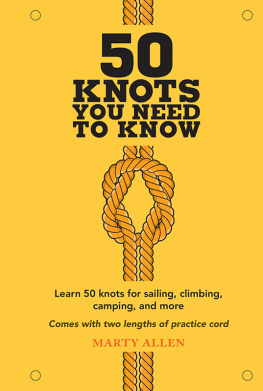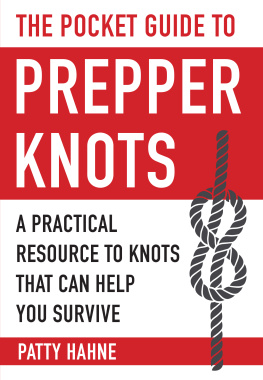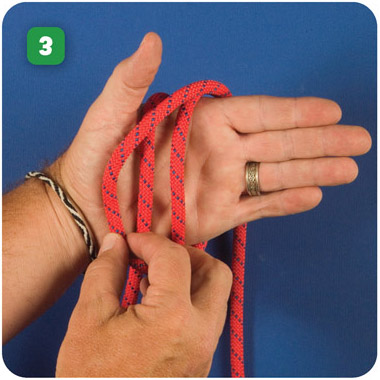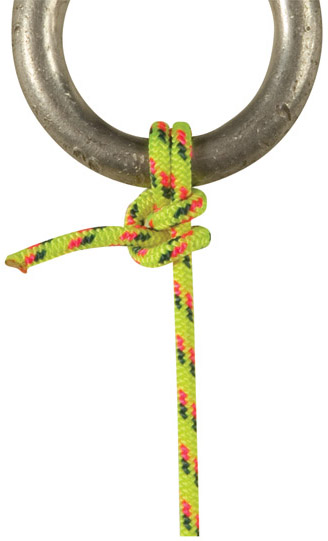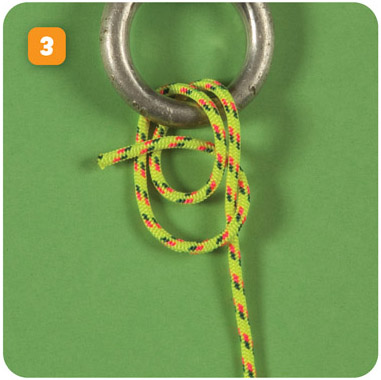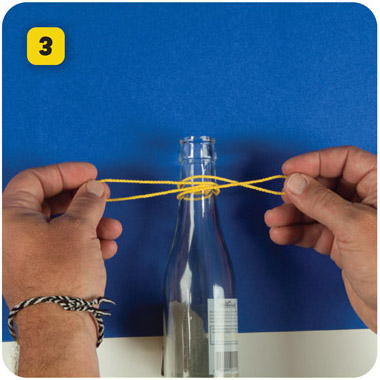Buck Tilton is the author of Knack Knots You Need, Knack Hiking & Backpacking, Knack First Aid, and Outward Bound USA Ropes, Knots, and Hitches. His many books for FalconGuides, including the award-winning Wilderness First Responder, have sold more than 300,000 copies combined. He teaches at Central Wyoming College.
Experienced outdoor chef and artist Christine Conners is the author of the nationally popular Lipsmackin and Scout outdoor cookbook series. If youd like to see more of her work across other mediums, visit Christine at lipsmackincampin.com and artbyconners.com.
FORMS A FIXED LOOP IN THE STANDING PART OF A ROPE
This knot creates a fixed loop (a loop that will not move). You can tie it at any place in a rope. Its a loop you can clip or tie just about anything to, including a person. It is especially popular in glacier travel, where its common to find three climbers attached to one rope, one climber at each end and one in the middle. Unlike the loop knot (see page 76), the alpine butterfly will safely hold up with a lot of weight attached. It stands up to being pulled from either direction without weakening.
In addition to strength and security, the alpine butterfly almost always unties easily, even after being heavily weighted. Other loops can get so tight youll never get them untied. As with other loops, you can use this knot to make a rope with a weak spot stronger. To strengthen a rope, tie this knot with the weak spot in the loop of the butterfly.
Like a lot of knots, this one can be tied in several different ways. This way is not very difficult.
Wrap the rope around your left hand twice, as shown in the photograph.
Move the turn closest to your fingertips to lie between the other two turns.
Move the turn that is now closest to your fingertips to lie closest to your thumb.
Bring the turn now closest to your thumb underneath the other two turns toward your fingertips. By grasping the loop, you can now remove the rope from your hand.
Shape the knot by pulling on the loop and the two main sections of the rope.
Tighten the knot by pulling on the two main sections of the rope.
A RELATIVELY STRONG AND SECURE HITCH, ESPECIALLY FOR WET OR SLICK LINES
The anchor bend (also known as the fishermans bend) is another knot that got stuck with the wrong name. It is actually a hitch, handy for jobs like tying the mooring lines of small boats to mooring rings. Its a strong knot, and it works well in lines slippery from wetness or slippery because of the material the rope is made from. Polypropylene ropes are very slippery. The anchor bend is a variation of the round turn and two half hitches (see page 95). This knot works well when you want to hang something from the limb of a tree.
Take the working end of the line over or through the anchoring point.
Take the working end around or through the anchoring point a second time.
Really Love Knots?
The Ashley Book of Knots by Clifford W. Ashley was written in 1944 and contains over 3,800 knots! It took Mr. Ashley eleven years to write and it has never gone out of print!
Bring the working end across the standing part and through both turns in the line that is around or through the anchoring point. You have now tied a half hitch through two loops.
Snug up the first half hitch and tie a second half hitch around the standing part. Tighten the entire knot.
USED FOR HANGING A BOTTLE OR OTHER SIMILAR CONTAINER OF LIQUID
Onboard a ship, bottles of liquidwater, stove fuel, juicecan slip, slide, fall, spill, or break open. This is a sling knot that grips the necks of many containers (not just glass) allowing you to hang a container safely or carry it easier. But you dont have to be on a boat to use this knot. Sling knots may also be useful to anyone who wants to secure a container of liquid for ease of carrying, hanging, or hauling.
Begin by tying a piece of twine or cord into the appropriate-size loop. A fine knot for tying a loop is the fishermans double knot (see page 60). Lay the loop beneath the neck of the bottle.
Bring the bight on one side across the neck and through the bight on the other side, as shown in the photograph.
FUN FACT
Doctors in ancient Rome bandaged their patients with the Hercules knot, similar to the square knot. Pliny the Elder (AD 2379), Roman author, philosopher, and naturalist, noted that wounds healed faster when they were bandaged with the Hercules knot.




